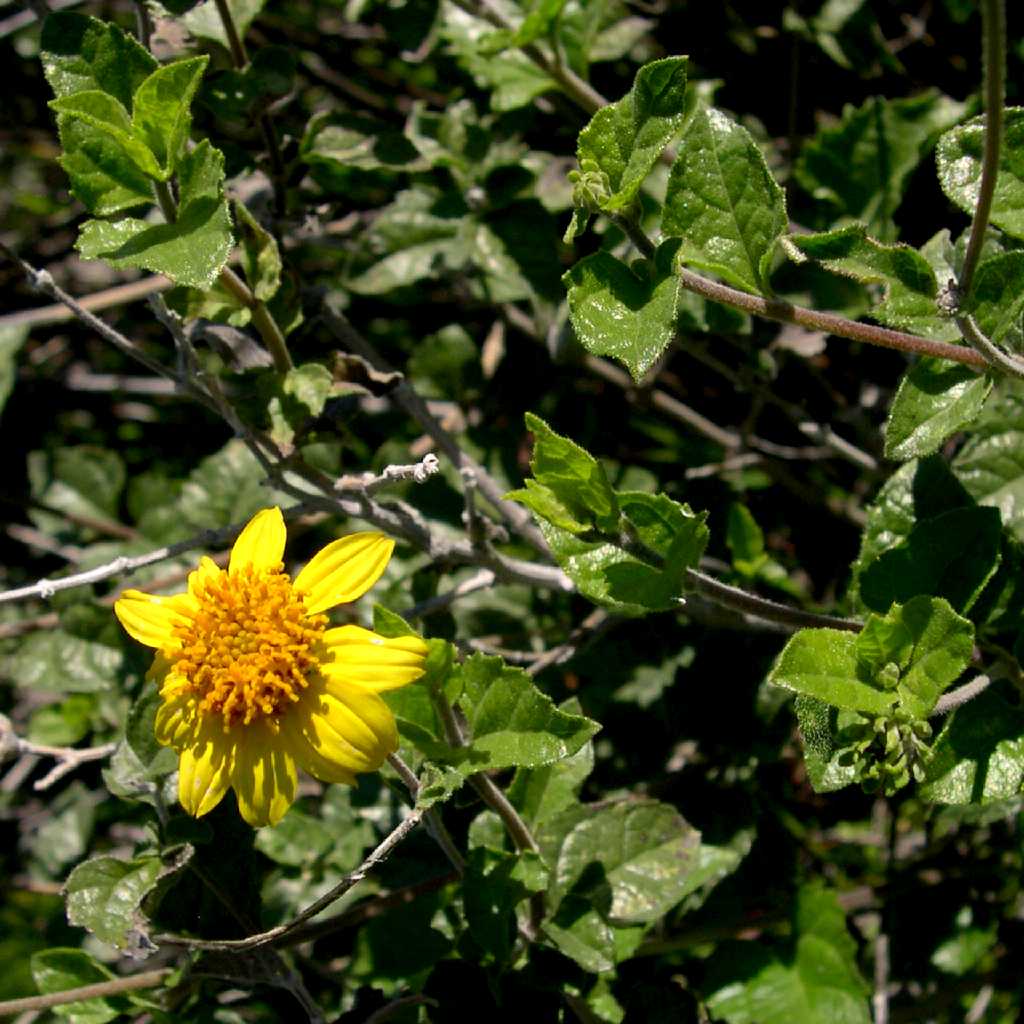Bahiopsis
|
Family: Asteraceae |
Shrubs, 50-150 cm . Stems ascending to erect, much branched. Leaves mostly cauline; alternate or opposite; petiolate or sessile; blades usually 3-nerved (from at or near bases), deltate, deltate-ovate, lanceolate, lance-ovate, or ovate, margins entire or toothed to laciniate, faces hispid, sericeous, or strigillose, often resinous or gland-dotted. Heads radiate, borne singly or (3-25+) in ± thyrsiform arrays. Involucres campulate to hemispheric, (9-14 ×) 4-7 mm. Phyllaries persistent, 16-28 in 2-3 series (unequal, bases ovate to lance-ovate, indurate, apices abruptly narrowed, herbaceous). Receptacles convex, paleate (paleae tan, conduplicate, apices acute). Ray florets 8-15, neuter; corollas yellow (2-3-lobed). Disc florets 40-50+, bisexual, fertile; corollas yellow, tubes shorter than campanulate throats, lobes 5, triangular (style branches relatively slender, apices acute). Cypselae (brown to black) ± compressed, ± 3- or 4- angled, often obpyramidal, ± strigose; pappi persistent, of 2(-6) lacerate, aristate scales (1-2.8 mm) plus (0-)2-6 lacerate scales (0.2-1 mm). x = 18. Although traditionally included within Viguiera , the species of Bahiopsis differ by their distinctive base chromosome number and form a basally diverging clade in subtribe Helianthinae, based on molecular data. Morphologically, they are most similar to Calanticaria, another segregate of Viguiera that is Mexican in geographic distribution, from which they differ by their branched capitulescences and having phyllaries in which the apical herbaceous portions are longer.
|

